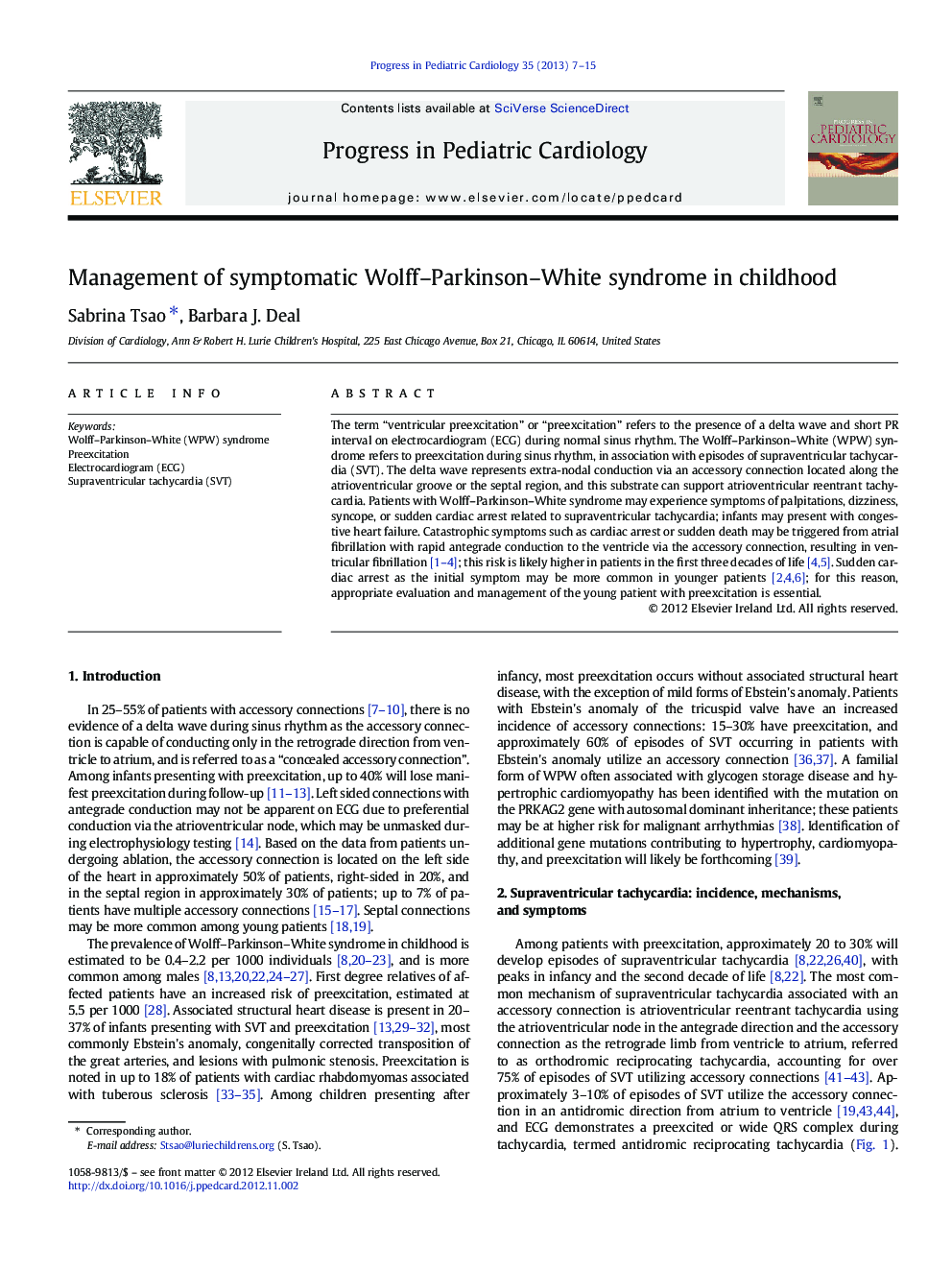| کد مقاله | کد نشریه | سال انتشار | مقاله انگلیسی | نسخه تمام متن |
|---|---|---|---|---|
| 3007484 | 1181369 | 2013 | 9 صفحه PDF | دانلود رایگان |

The term “ventricular preexcitation” or “preexcitation” refers to the presence of a delta wave and short PR interval on electrocardiogram (ECG) during normal sinus rhythm. The Wolff–Parkinson–White (WPW) syndrome refers to preexcitation during sinus rhythm, in association with episodes of supraventricular tachycardia (SVT). The delta wave represents extra-nodal conduction via an accessory connection located along the atrioventricular groove or the septal region, and this substrate can support atrioventricular reentrant tachycardia. Patients with Wolff–Parkinson–White syndrome may experience symptoms of palpitations, dizziness, syncope, or sudden cardiac arrest related to supraventricular tachycardia; infants may present with congestive heart failure. Catastrophic symptoms such as cardiac arrest or sudden death may be triggered from atrial fibrillation with rapid antegrade conduction to the ventricle via the accessory connection, resulting in ventricular fibrillation [1], [2], [3] and [4]; this risk is likely higher in patients in the first three decades of life [4] and [5]. Sudden cardiac arrest as the initial symptom may be more common in younger patients [2], [4] and [6]; for this reason, appropriate evaluation and management of the young patient with preexcitation is essential.
Journal: Progress in Pediatric Cardiology - Volume 35, Issue 1, January 2013, Pages 7–15